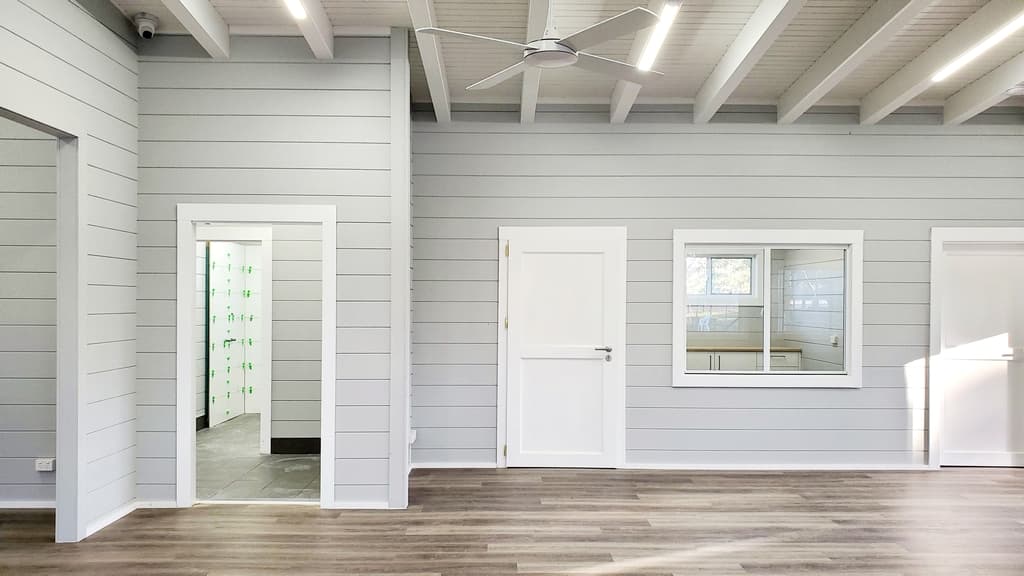It’s no secret that building a new home is exciting-having full control over the design allows you to create a space that’s perfectly suited to your style and needs. It also presents you with a unique opportunity to make sustainable choices that will have a real and lasting positive impact on the environment and your health.

While eco-friendly homes were considered an alternative idea a decade ago, there is now a genuine expectation that new homes incorporate sustainable features into the design. From optimum orientation and passive design elements, to energy efficient appliances and airtightness, more and more people are looking for ways to reduce their footprint. A key area that can make a huge difference to the sustainability of your new home is in the materials-and timber is the standout choice in this regard.
Read on to find out why!
Our most renewable raw material just got better

Humans have been constructing buildings with wood since ancient times, however, over the past 100 years or so, concrete, steel and bricks have become more widely used. This has been due in part to a misconception that they are a safer and more structurally sound option, but pre-manufacturing technology and state-of-the-art CNC capabilities is disrupting this idea and putting timber back in the spotlight.
Structural timber, or mass timber is made by bonding pieces of wood together to create a strong and sustainable alternative to solid wood cut straight from the tree. Our Scandinavian kit homes are built with glued-laminated (glulam), a type of structural timber that is more stable and less prone to shrinkage than solid wood. There are also some key sustainable benefits to building with mass timber, and it’s this that has got many in the industry excited about its potential as a viable and sustainable alternative to non-renewable and synthetic materials.
Remove carbon from the atmosphere with your home

Did you know that long-life timber homes act like carbon sinks, ‘removing’ carbon dioxide from the atmosphere? By weight, wood is mainly made up of water and carbon, and when trees are growing they use photosynthesis to bind around one tonne of carbon dioxide per cubic metre of wood while also releasing oxygen into the air. For every timber house, many tonnes of carbon can be stored, significantly reducing the amount found in the atmosphere.
To put things in perspective, here’s some interesting figures:
- Our Madeira 2-bedroom granny flat can ‘remove’ 14.5 tonnes of carbon from the atmosphere—this equates to roughly the same amount of carbon emitted by the average motorist driving their car over 5 years.
- Our Charmhaven Tennis Centre clubhouse can effectively capture approximately 30 tonnes of carbon, which is the equivalent of the average motorist driving their car over 10 years.
Avoid non-renewable materials that add carbon

To add further context to the above figures, if we’d used alternative materials such as concrete, steel, brick or aluminium to construct the Madeira granny flat, it would have added 18 tonnes net in carbon emissions to the atmosphere. This is the equivalent of over 6.5 years of car use by the average motorist. These materials add considerably more carbon emissions during manufacture than wood products, and also during transport due to their heavier weight. Another tick for wood is that any leftover timber off-cuts can be diverted from waste and repurposed, as they are in our factory, where they are used for bio-energy to power the site.

CO2 emissions caused by the manufacture of different building materials (Source: Building Information Group RT environmental reports).
So while other commonly used building materials like steel and concrete add carbon, by building your home from timber, you’ll do no harm to the environment, but instead will contribute to removing carbon from the atmosphere. With this in mind, wood is clearly our most renewable raw material and is a smarter, more sustainable solution for buildings moving forward.
Will you choose sustainable wood?

When it comes to building your new home or granny flat, there are many design choices to make along the way. However, one of the most important decisions you will make is which materials you will choose to construct your new home. Will you opt for sustainable timber? Or choose carbon-emitting concrete, steel, brick or aluminium?
We think it’s simple. Wood is our most renewable raw material and using it to build healthier, more sustainable homes just makes sense!
If you’d like more information about our Scandinavian Kit Homes, get in touch with our team or download our Information Pack to learn about our designs, or our Builder Info Pack to find out more about joining our network of builders today!
